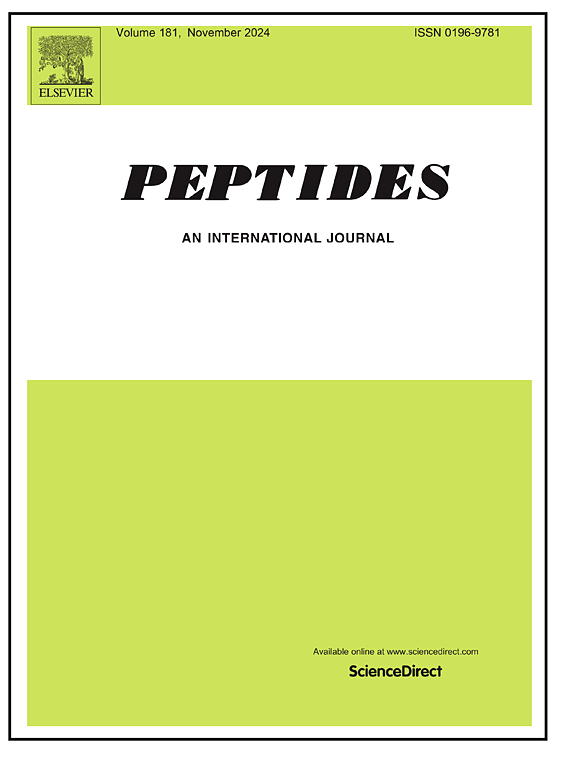Synthesis of the plant cyclotide cyO14 via the hydrazide strategy and investigation of its antibacterial and insecticidal activities
IF 2.9
4区 医学
Q3 BIOCHEMISTRY & MOLECULAR BIOLOGY
引用次数: 0
Abstract
The plant cyclotide cyO14, a member of the Möbius subfamily, was synthesized using an hydrazide-based strategy, and its antibacterial, insecticidal, and hemolytic activities were investigated. The linear precursor of cyO14 was prepared via solid-phase peptide synthesis (SPPS) on an hydrazide resin, followed by head-to-tail cyclization through an hydrazide-mediated ligation and disulfide bond formation via spontaneous oxidation. The synthesized cyclotide exhibited a structure identical to that of the naturally occurring counterpart. Biological evaluation demonstrated that cyO14 possessed significant antibacterial activity against Cryptococcus neoformans and Bacillus subtilis, with a minimum inhibitory concentration (MIC) of 1 μM. Mechanistic studies revealed that cyO14 exerted its antibacterial effects by disrupting bacterial membranes. Moreover, cyO14 exhibited negligible hemolytic activity (HD₅₀ > 1000 μM), suggesting excellent biocompatibility. In insecticidal assays, cyO14 effectively inhibited the growth and development of Helicoverpa armigera. These findings indicate that the hydrazide-mediated cyclization strategy is an efficient method for the synthesis of Möbius subfamily cyclotides, and that cyO14 possesses promising pharmaceutical and agricultural potential due to its potent antibacterial and insecticidal activities coupled with high biological safety.
酰肼策略合成植物环肽cyO14及其抑菌杀虫活性研究
利用酰肼合成了Möbius亚家族植物环肽cyO14,并对其抗菌、杀虫和溶血活性进行了研究。采用固相多肽合成(SPPS)法制备了cyO14的线性前驱体,然后通过肼介导的连接进行首尾环化,并通过自发氧化形成二硫键。合成的环肽具有与天然环肽相同的结构。生物学评价表明,cyO14对新型隐球菌和枯草芽孢杆菌具有显著的抑菌活性,最低抑菌浓度(MIC)为1μM。机制研究表明,cyO14通过破坏细菌膜发挥抗菌作用。此外,cyO14表现出可忽略不计的溶血活性(HD₅₀> 1000μM),表明具有出色的生物相容性。在杀虫实验中,cyO14能有效抑制棉铃虫的生长发育。这些研究结果表明,肼介导的环化策略是合成Möbius亚族环酸酯的有效方法,cyO14因其强大的抗菌和杀虫活性以及较高的生物安全性而具有广阔的制药和农业潜力。
本文章由计算机程序翻译,如有差异,请以英文原文为准。
求助全文
约1分钟内获得全文
求助全文
来源期刊

Peptides
医学-生化与分子生物学
CiteScore
6.40
自引率
6.70%
发文量
130
审稿时长
28 days
期刊介绍:
Peptides is an international journal presenting original contributions on the biochemistry, physiology and pharmacology of biological active peptides, as well as their functions that relate to gastroenterology, endocrinology, and behavioral effects.
Peptides emphasizes all aspects of high profile peptide research in mammals and non-mammalian vertebrates. Special consideration can be given to plants and invertebrates. Submission of articles with clinical relevance is particularly encouraged.
 求助内容:
求助内容: 应助结果提醒方式:
应助结果提醒方式:


